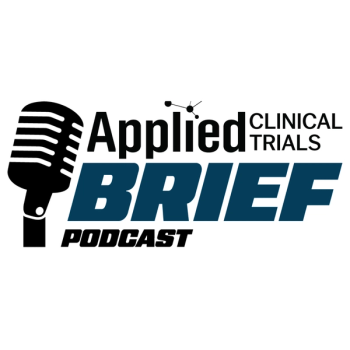Key takeaways
Wearable ECG devices are transforming cardiac safety monitoring by enabling continuous, real-world data collection, reducing patient burden, and improving detection of transient cardiac events compared to traditional Holter monitors and in-clinic ECGs.
Successful integration of wearable technology in trials requires proactive planning, including easy-to-use devices, real-time adherence monitoring tools, and robust data security frameworks to protect sensitive health information.
Wearable ECGs may accelerate trial timelines and reduce costs by improving data completeness, enhancing participant compliance, and potentially streamlining regulatory approvals for new therapies.
Wearable technology has moved beyond fitness trackers and has become a critical tool in modern healthcare, especially in cardiac care. In particular, wearable electrocardiogram (ECG) devices provide continuous, real-time monitoring essential for both patient safety and early detection of potential risks.
In cardiac safety studies, closely monitoring heart function is necessary for identifying any heart-related side effects that may emerge during drug trials. Traditional monitoring methods, like in-clinic ECGs or Holter monitors, often require patients to make frequent clinic visits or wear cumbersome devices. These interruptions can disrupt daily routines, reduce patient adherence, and create gaps in data collection.
Wearable ECGs offer a more patient-friendly solution. Researchers can monitor heart health as patients go about their routines, helping detect risks sooner and reducing patient burden. As a recent cardiac safety study shows, and as more studies follow suit, wearable ECGs have the potential to improve both patient safety and the overall trial experience.
The growing importance of cardiac safety studies
Cardiac safety studies serve as a vital checkpoint in drug development. Their primary goal is to identify potential heart-related side effects early, such as QT prolongation, which can lead to dangerous arrhythmias. These studies help ensure that any risks are recognized before a drug reaches the market and provide critical data that regulatory bodies rely on for therapy approval.
Traditionally, researchers have relied on tools like Holter monitors and in-clinic ECG tests to monitor heart function. While Holter monitors can capture heart activity for 24 to 48 hours, they record only a brief window of data and potentially miss irregular events that occur outside that timeframe. In-clinic ECGs offer more detailed readings but only during specific visits and provide a snapshot rather than a continuous view of heart health.
On the other hand, wearable ECGs allow patients to go about their usual routines while continuously collecting heart data over several days. Unlike bulky devices or setups that need regular clinic visits, these wearables unobtrusively capture heart activity and increase the chances of detecting transient or asymptomatic events, those brief but critical signals that could indicate serious risks.
Research shows that wearable ECGs are accurate, but few studies have specifically focused on their role in cardiac safety. One recent study found these devices detect arrhythmias as accurately as traditional monitoring methods. Previous studies also highlight how wearable ECGs can help reduce healthcare costs while providing reliable and ongoing heart health insights.
Demonstrating the impact of wearable ECGs in cardiac safety
In a large cardiac safety study for a central nervous system (CNS) disease drug trial, researchers use wearable ECG patches to monitor participants over several years. The trial focuses on a drug that stimulates the immune system to produce antibodies against a toxic protein affecting the CNS.
Over several years, participants wear the patch for a few separate multi-day periods. This setup enables continuous tracking of heart function without interrupting their daily lives. By monitoring heart health over an extended time, researchers can collect vitals data while enhancing participant adherence and minimizing the burden of frequent clinic visits.
The patch collects several key health metrics, including ECG, heart rate, heart rate variability, breathing rate, physical activity, such as step count, and skin temperature. From there, the devices securely send the data to smartphones through a dedicated app. Once uploaded to the cloud, researchers access and analyze the data through a secure web portal.
The technology makes it easier for participants to stay engaged in the study while providing the research team with trustworthy data to assess the drug’s safety and effectiveness. Ultimately, integrating wearable technology could accelerate regulatory approvals and enhance patient outcomes in drug development.
Addressing potential challenges
Even with the advantages of wearable ECGs, successful implementation in clinical trials requires thoughtful planning. Researchers must anticipate and overcome several common hurdles:
- Technology complexity: Device setup and usage can create barriers. Staff and participants need to understand how the device works and how it fits into the study. A pre-configured solution that’s easy to apply and requires little to no interaction during wear can help reduce friction. The ideal setup should be simple and intuitive, particularly one that’s “wear and forget,” making it easy for patients to use without burden.
- Patient adherence: Ensuring participants consistently use wearable devices can be challenging, especially in long-term studies. An effective solution should include a real-time patient adherence monitoring dashboard, which enables researchers to track usage patterns, promptly address issues, and ensure uninterrupted data collection.
- Data security: Cardiac safety studies involve sensitive data. Strong data security measures are essential. A technology infrastructure that anonymizes and protects patient information across every stage of data handling helps maintain patient privacy and meet regulatory standards.
Future implications for cardiac safety studies
As wearable ECGs continue to demonstrate their value, they have the potential to become a standard tool in clinical trials, particularly for cardiac safety. With more studies highlighting their benefits, wearable ECGs could replace bulkier tools and establish a new standard, not just in cardiac-specific trials, but in any study where heart health is a concern.
With the ability to continuously gather high-quality data over extended periods, wearable ECGs can help detect cardiac risks sooner, shorten trial timelines, and accelerate regulatory approval processes. The devices can also lower the overall costs of clinical trials by reducing the need for repeat tests or patient monitoring in controlled environments. Ultimately, the technology could make drug development more efficient and bring life-saving treatments to market faster.
Jiang Li, CEO of Vivalink







.png)



.png)



.png)
.png)
